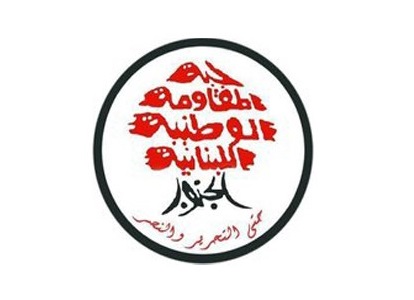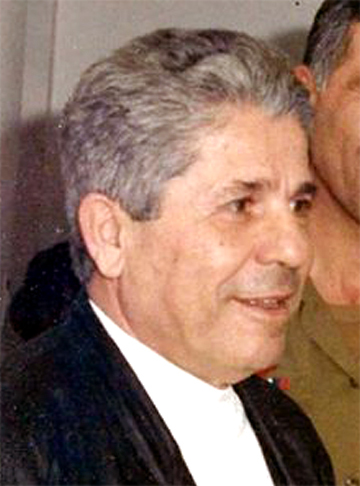|
Islamic Unification Movement
The Islamic Unification Movement – IUM ( ar, حركة التوحيد الإسلامي , ''Harakat al-Tawhid al-Islami''), also named Islamic Unity Movement or Mouvement d'unification islamique (MUI) in French, but best known as Al-Tawhid, At-Tawhid, or Tawheed, is a Lebanese Sunni Muslim political party. It plays an active role in Lebanese internal politics since the Lebanese Civil War in the 1980s. Origins The IUM was founded in Tripoli in 1982 from a splinter faction of the Lebanese Islamic Group led by Sheikh Said Shaaban, one of Lebanon’s Islamist movements’ few charismatic Sunni religious leaders. A hardliner who believed that force was a good solution in politics, the radical Shaaban broke away from the Islamic Group soon after the June 1982 Israeli invasion of Lebanon, in protest for that Party’s leadership decision of adopting a non-violent, moderate political line in the early 1980s. Nevertheless, the two organizations have always maintained a good rela ... [...More Info...] [...Related Items...] OR: [Wikipedia] [Google] [Baidu] |
Lebanese Civil War
The Lebanese Civil War ( ar, الحرب الأهلية اللبنانية, translit=Al-Ḥarb al-Ahliyyah al-Libnāniyyah) was a multifaceted armed conflict that took place from 1975 to 1990. It resulted in an estimated 120,000 fatalities and an exodus of almost one million people from Lebanon. The diversity of the Lebanese population played a notable role in the lead-up to and during the conflict: Sunni Muslims and Christians comprised the majority in the coastal cities; Shia Muslims were primarily based in the south and the Beqaa Valley in the east; and Druze and Christians populated the country's mountainous areas. The Lebanese government had been run under the significant influence of elites within the Maronite Christian community. The link between politics and religion had been reinforced under the French Mandate from 1920 to 1943, and the country's parliamentary structure favoured a leading position for its Christian-majority population. However, the country had a ... [...More Info...] [...Related Items...] OR: [Wikipedia] [Google] [Baidu] |
Lebanese National Resistance Front
The Lebanese National Resistance Front – LNRF ( ar, جبهة المقاومة الوطنية اللبنانية, ''Jabhat al-Muqawama al-Wataniyya al-Lubnaniyya'') or Front National de la Résistance Libanaise (FNRL) in French, but best known by its Arabic acronym, ‘Jammoul’ (جمول), was an underground guerrilla alliance active in Lebanon in the 1980s. It acted as a successor to the Lebanese National Movement, which ceased to exist after the Israeli invasion of Lebanon. Origins This organization was founded on September 16, 1982, the same day the Israeli army entered West Beirut. The secretary general of the central committee of the Lebanese Communist Party (LCP) George Hawi, the secretary general of the Organization of Communist Action – Lebanon (OCAL) Muhsin Ibrahim, the Arab Socialist Action Party – Lebanon (ASAP-L) secretary general Hussein Hamdan, the Arab Socialist Ba'ath Party – Lebanon Region, and the Syrian Social Nationalist Party in Lebanon (SSNP) i ... [...More Info...] [...Related Items...] OR: [Wikipedia] [Google] [Baidu] |
French Language
French ( or ) is a Romance language of the Indo-European family. It descended from the Vulgar Latin of the Roman Empire, as did all Romance languages. French evolved from Gallo-Romance, the Latin spoken in Gaul, and more specifically in Northern Gaul. Its closest relatives are the other langues d'oïl—languages historically spoken in northern France and in southern Belgium, which French ( Francien) largely supplanted. French was also influenced by native Celtic languages of Northern Roman Gaul like Gallia Belgica and by the ( Germanic) Frankish language of the post-Roman Frankish invaders. Today, owing to France's past overseas expansion, there are numerous French-based creole languages, most notably Haitian Creole. A French-speaking person or nation may be referred to as Francophone in both English and French. French is an official language in 29 countries across multiple continents, most of which are members of the ''Organisation internationale de la Francophonie'' ... [...More Info...] [...Related Items...] OR: [Wikipedia] [Google] [Baidu] |
South Lebanon Conflict (1985–2000)
The South Lebanon conflict, designated by Israel as the Security Zone in Lebanon Campaign,IDF to recognize 18-year occupation of south Lebanon as official campaign Times of Israel, Nov 4, 2020. Accessed Nov 5, 2020. was a protracted armed conflict that took place in from 1985 to 2000. It saw fighting between the -dominated |
Battle Of Tripoli (1983)
The Battle of Tripoli ( ar, مَعْرَكَة طَرَابُلُس, Maʿrakat Ṭarābulus) was a major battle during the middle of the Lebanese Civil War in late 1983. It took place in the northern coastal city of Tripoli between pro-Syrian Palestinian militant factions and the Palestine Liberation Organization (PLO) led by Yassir Arafat. It resulted in the withdrawal of PLO and mostly ended their involvement in the war. Background Syria intervened in the Lebanese Civil War, occupying the country from 1976. The Syrians were backed by various local allies and proxy factions, many of whom were Palestinians. In 1982, Israel invaded Lebanon to expel the various Palestinian militant groups from the country. Even though the Israelis failed to evict most militant factions, the PLO was severely weakened by the invasion and had to evacuate. The organization fled to various Arab countries whose governments attempted to gain more control over it, though Arafat opposed this developme ... [...More Info...] [...Related Items...] OR: [Wikipedia] [Google] [Baidu] |
1982 Lebanon War
The 1982 Lebanon War, dubbed Operation Peace for Galilee ( he, מבצע שלום הגליל, or מבצע של"ג ''Mivtsa Shlom HaGalil'' or ''Mivtsa Sheleg'') by the Israeli government, later known in Israel as the Lebanon War or the First Lebanon War ( he, מלחמת לבנון הראשונה, ''Milhemet Levanon Harishona''), and known in Lebanon as "the invasion" ( ar, الاجتياح, ''Al-ijtiyāḥ''), began on 6 June 1982, when the Israel Defense Forces (IDF) invaded southern Lebanon. The invasion followed a series of attacks and counter-attacks between the Palestine Liberation Organization (PLO) operating in southern Lebanon and the IDF that had caused civilian casualties on both sides of the border. The military operation was launched after Abu Nidal Organization, gunmen from Abu Nidal's organization attempted to assassinate Shlomo Argov, Israel's ambassador to the United Kingdom. Israeli Prime Minister Menachem Begin blamed Abu Nidal's enemy, the PLO, for the inciden ... [...More Info...] [...Related Items...] OR: [Wikipedia] [Google] [Baidu] |
Bab Al-Tabbaneh–Jabal Mohsen Conflict
The Bab al-Tabbaneh–Jabal Mohsen conflict was a recurring conflict between the Sunni Muslim residents of the Bab-al-Tabbaneh neighbourhood and the Alawite residents of the Jabal Mohsen neighbourhood of Tripoli, Lebanon from 1976 through 2015. Residents of the two neighbourhoods became rivals during the Lebanese Civil War and frequently engaged in violence. Residents were divided along sectarian lines and by their opposition to or support of the Alawite-led Syrian government. Violence flared up during the Syrian Civil War spillover in Lebanon. Background For centuries, Sunni Muslims and Alawites have fought each other. The Sunni Ottoman Empire oppressed Alawites, but Alawites gained power and influence when the French recruited them as soldiers during the French Mandate of Syria. After independence from France, Alawites' co-religionists came to power in Syria in 1966 and have been represented by the al-Assad family since 1970. This event angered some of the Sunni maj ... [...More Info...] [...Related Items...] OR: [Wikipedia] [Google] [Baidu] |
Lebanese Civil War
The Lebanese Civil War ( ar, الحرب الأهلية اللبنانية, translit=Al-Ḥarb al-Ahliyyah al-Libnāniyyah) was a multifaceted armed conflict that took place from 1975 to 1990. It resulted in an estimated 120,000 fatalities and an exodus of almost one million people from Lebanon. The diversity of the Lebanese population played a notable role in the lead-up to and during the conflict: Sunni Muslims and Christians comprised the majority in the coastal cities; Shia Muslims were primarily based in the south and the Beqaa Valley in the east; and Druze and Christians populated the country's mountainous areas. The Lebanese government had been run under the significant influence of elites within the Maronite Christian community. The link between politics and religion had been reinforced under the French Mandate from 1920 to 1943, and the country's parliamentary structure favoured a leading position for its Christian-majority population. However, the country had a ... [...More Info...] [...Related Items...] OR: [Wikipedia] [Google] [Baidu] |
Syrian Army
" (''Guardians of the Homeland'') , colors = * Service uniform: Khaki, Olive * Combat uniform: Green, Black, Khaki , anniversaries = August 1st , equipment = , equipment_label = , battles = 1948 Arab–Israeli War Six-Day War War of Attrition Black September Yom Kippur War Lebanese Civil War 1982 Lebanon War Islamist uprising in Syria Mountain War (Lebanon) Operation Desert Storm Syrian Civil War , decorations = , battle_honours = , battle_honours_label = , disbanded = , website = , commander1 = Marshal Bashar al-Assad , commander1_label =President of Syria , commander2 = Gen. Ali Mahmoud Abbas , commander2_label = Minister of Defense , commander3 = Gen. Abdul Karim Mahmoud Ibrahim , commander3_label = Chief of the General Staff , notable_commanders = , identification_symbol = , identification_symbol_label = , identification_symbol_2 = , identification_symbol_2_label = The Syrian Army, officially the Syrian Arab Army (SAA) ( a ... [...More Info...] [...Related Items...] OR: [Wikipedia] [Google] [Baidu] |
Israel Defense Forces
The Israel Defense Forces (IDF; he, צְבָא הַהֲגָנָה לְיִשְׂרָאֵל , ), alternatively referred to by the Hebrew-language acronym (), is the national military of the Israel, State of Israel. It consists of three service branches: the Israeli Ground Forces, the Israeli Air Force, and the Israeli Navy. It is the sole military wing of the Israeli security forces, Israeli security apparatus, and has no civilian jurisdiction within Israel. The IDF is headed by the Chief of the General Staff (Israel), Chief of the General Staff, who is subordinate to the Ministry of Defense (Israel), Israeli Defense Minister. On the orders of David Ben-Gurion, the IDF was formed on 26 May 1948 and began to operate as a Conscription in Israel, conscript military, drawing its initial recruits from the already-existing paramilitaries of the Yishuv—namely Haganah, the Irgun, and Lehi (militant group), Lehi. Since its formation shortly after the Israeli Declaration of Independen ... [...More Info...] [...Related Items...] OR: [Wikipedia] [Google] [Baidu] |
South Lebanon Army
The South Lebanon Army or South Lebanese Army (SLA; ar, جيش لبنان الجنوبي, Jayš Lubnān al-Janūbiyy), also known as the Lahad Army ( ar, جيش لحد, label=none) and referred to as the De Facto Forces (DFF) by the United Nations, was a Lebanese Christian-dominated militia that was founded during the Lebanese Civil War and operated as a quasi-military force from 1977 until its disbandment in 2000. It was originally known as the Free Lebanon Army after its breakaway from the Army of Free Lebanon (AFL), another Christian-dominated force. After 1979, the militia mainly operated in southern Lebanon under the authority of Saad Haddad, and was based in the unrecognized Free Lebanon State. The SLA was supported by Israel, and became its primary ally in Lebanon during the 1985–2000 South Lebanon conflict against Hezbollah, a Lebanese Shia militant Islamist group. History file:Shaddad.jpg, Saad Haddad In January 1976, as a result of the ongoing civil war, the Le ... [...More Info...] [...Related Items...] OR: [Wikipedia] [Google] [Baidu] |
Internal Security Forces
The Internal Security Forces Directorate ( ar, المديرية العامة لقوى الأمن الداخلي, al-Mudiriyya al-'aamma li-Qiwa al-Amn al-Dakhili; french: Forces de Sécurité Intérieure; abbreviated ISF) is the national police and security force of Lebanon. Modern police were established in Lebanon in 1861, with creation of the Gendarmerie. In April 2005, Ashraf Rifi became head of the ISF, replacing Ali Hajj. Rifi then started to recruit younger members to become part of Lebanese Intelligence. His term ended in April 2013, and he was replaced by Roger Salem, and Ibrahim Basbouss subsequently. On March 8, 2017, the Lebanese Cabinet appointed Imad Othman director-general of the ISF. He took command the following day. The number of personnel reached 30,000 people by 2000 and has grown to over 40,000 by 2013. The ISF National Day in Lebanon is on the 9th of June. Missions Their missions include : * Maintaining public order. * Highway patrol. * Counter-terroris ... [...More Info...] [...Related Items...] OR: [Wikipedia] [Google] [Baidu] |






